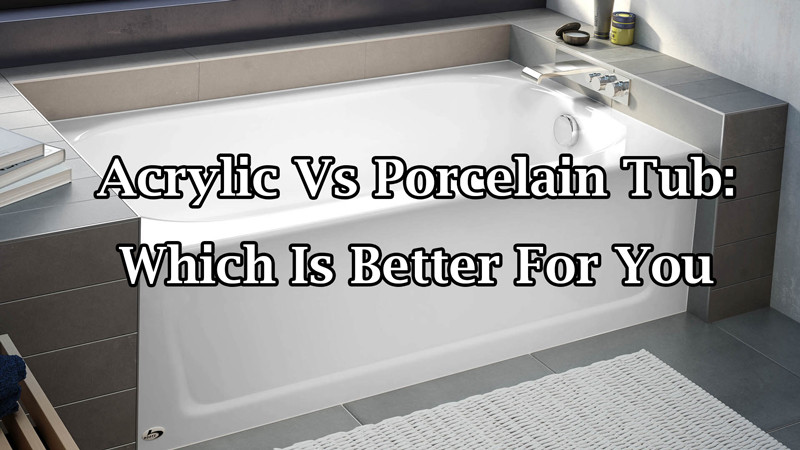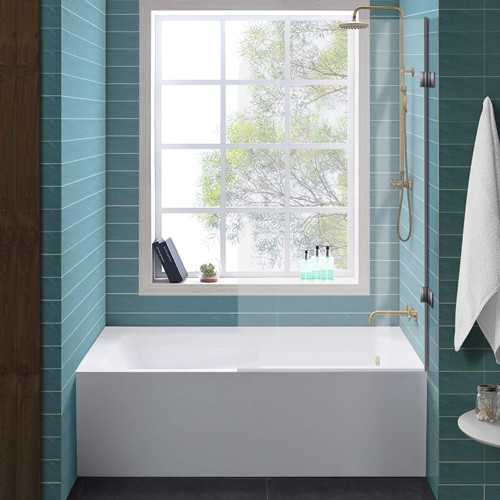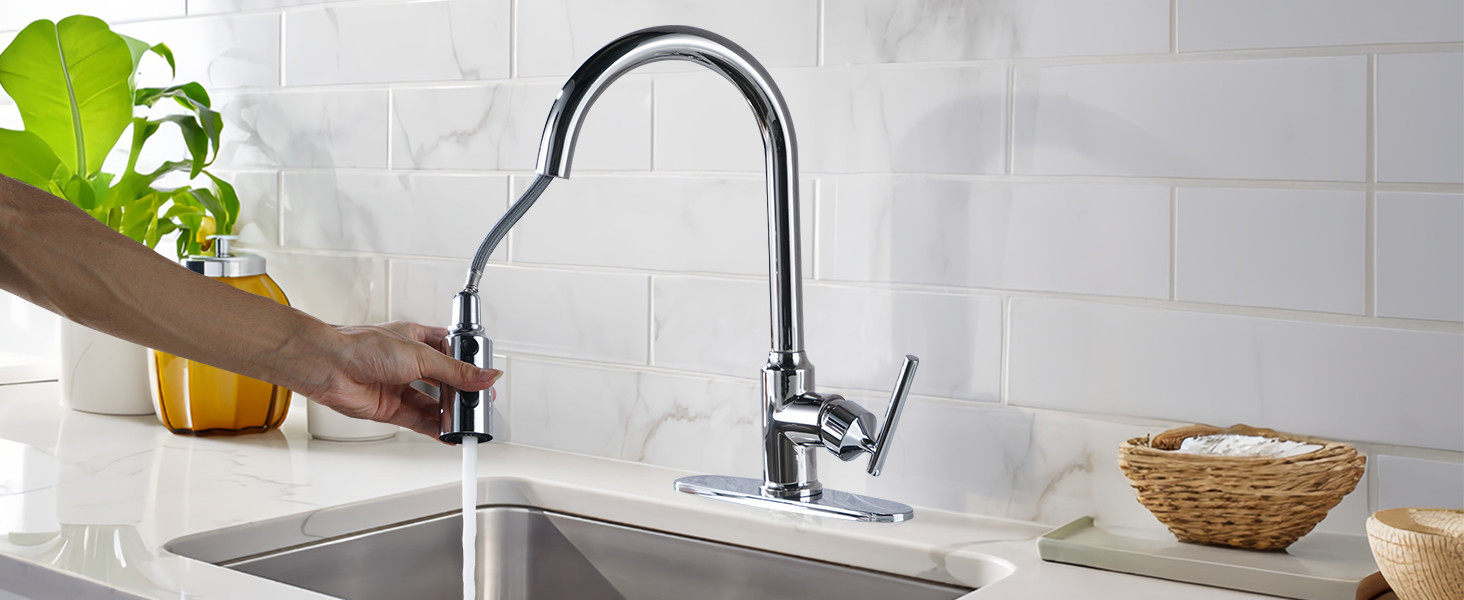
When it comes to selecting the ideal bathtub for your bathroom renovation or new construction project, the choice between acrylic and porcelain can be daunting. Both materials offer distinct advantages and drawbacks, making the decision a crucial one for homeowners and designers alike. In this comprehensive guide, we’ll delve into the characteristics of acrylic vs porcelain tubs, exploring their differences to help you make an informed decision on which is better suited for your needs.
Acrylic Tubs:
Acrylic tubs have gained popularity in recent years due to their versatility, affordability, and ease of maintenance. Made from molded acrylic sheets reinforced with fiberglass, these tubs offer a smooth, non-porous surface that is resistant to stains and scratches. Here are some key points to consider when contemplating an acrylic tub:
- Affordability: Acrylic tubs are generally more budget-friendly compared to porcelain options. Their manufacturing process is less labor-intensive, resulting in lower production costs, making them an attractive choice for homeowners on a tight budget.
- Versatility in Design: Acrylic tubs come in a wide range of shapes, sizes, and styles, allowing for greater flexibility in design. Whether you prefer a classic alcove tub, a sleek freestanding model, or a luxurious whirlpool option, there’s an acrylic tub to suit every taste and bathroom layout.
- Lightweight Construction: One of the standout features of acrylic tubs is their lightweight construction. This makes them easier to install and maneuver into tight spaces, particularly in older homes where structural limitations may exist.
- Heat Retention: Acrylic tubs are excellent at retaining heat, providing a longer-lasting and more enjoyable bathing experience. The material’s insulating properties help to keep the water warm for extended periods, reducing the need to continually top up with hot water.
- Ease of Maintenance: Cleaning and maintaining an acrylic tub is a breeze. The non-porous surface resists mold, mildew, and bacteria, requiring only regular wiping with a mild detergent to keep it looking pristine. Additionally, acrylic is less prone to chipping and cracking compared to porcelain, minimizing the need for repairs over time.
Porcelain Tubs:
Porcelain tubs, also known as enameled steel or cast iron tubs, have long been cherished for their timeless elegance and durability. Constructed from molded steel or cast iron coated with a layer of porcelain enamel, these tubs exude a classic charm that never goes out of style. Here’s what you need to know about porcelain tubs:
- Timeless Aesthetics: Porcelain tubs are synonymous with luxury and sophistication, making them a popular choice for homeowners seeking to create a timeless bathroom aesthetic. The glossy enamel finish lends a pristine look that complements both traditional and contemporary design schemes.
- Exceptional Durability: Thanks to their robust construction, porcelain tubs are incredibly durable and resistant to chips, scratches, and stains. The enamel coating provides a protective barrier that helps maintain the tub’s appearance even after years of use.
- Heat Retention: Like acrylic tubs, porcelain tubs are adept at retaining heat, ensuring a warm and relaxing bathing experience. The dense material holds heat effectively, allowing you to soak comfortably for extended periods without the water cooling too quickly.
- Weight and Installation: Unlike acrylic tubs, porcelain tubs are significantly heavier due to their steel or cast iron core. This weight can pose challenges during installation, requiring additional structural support to accommodate the tub’s mass. Consequently, installation costs may be higher for porcelain tubs, particularly in homes with limited access or structural constraints.
- Maintenance Requirements: While porcelain tubs are highly durable, they require careful maintenance to preserve their appearance. Harsh abrasives and acidic cleaners should be avoided, as they can damage the enamel finish. Regular cleaning with a non-abrasive cleaner is recommended to prevent staining and maintain the tub’s luster.
Acrylic Vs Porcelain Tub: Which Is Better for You?
Ultimately, the choice between acrylic and porcelain tubs depends on your personal preferences, budget, and specific requirements. If you prioritize affordability, versatility, and ease of maintenance, an acrylic tub may be the ideal option for your bathroom renovation. On the other hand, if you value timeless aesthetics, exceptional durability, and luxurious comfort, a porcelain tub might be the perfect fit for your home.
Before making a decision, consider factors such as your budget, design preferences, installation logistics, and long-term maintenance commitments. Additionally, consult with a qualified contractor or designer to assess your bathroom layout and determine the feasibility of each tub option.
Conclusion
In conclusion, both acrylic and porcelain tubs offer unique advantages and drawbacks, making them suitable for different homeowner needs and preferences. By weighing the pros and cons of each material and carefully evaluating your priorities, you can select the perfect tub that enhances both the functionality and aesthetic appeal of your bathroom space.
 WOWOW Faucets
WOWOW Faucets






您好!Please sign in